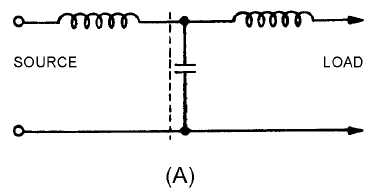1-41
Q-16. What is the filter called in which the low frequencies do not produce a useful voltage?
Q-17. What is the filter called that passes low frequencies but rejects or attenuates high frequencies?
Q-18. How does a capacitor and an inductor react to (a) low frequency and (b) high frequency?
Q-19. What term is used to describe the frequency at which the filter circuit changes from the point of
rejecting the unwanted frequencies to the point of passing the desired frequencies?
Q-20. What type filter is used to allow a narrow band of frequencies to pass through a circuit and
attenuate all other frequencies above or below the desired band?
Q-21. What type filter is used to block the passage of current for a narrow band of frequencies, while
allowing current to flow at all frequencies above or below this band?
MULTISECTION FILTERS
All of the various types of filters we have discussed so far have had only one section. In many cases,
the use of such simple filter circuits does not provide sufficiently sharp cutoff points. But by adding a
capacitor, an inductor, or a resonant circuit in series or in parallel (depending upon the type of filter action
required), the ideal effect is more nearly approached. When such additional units are added to a filter
circuit, the form of the resulting circuit will resemble the letter T, or the Greek letter
p
(pi). They are,
therefore, called T- or
p
-type filters, depending upon which symbol they resemble. Two or more T- or
p-
type filters may be connected together to produce a still sharper cutoff point.
Figure 1-23, (view A) (view B) and (view C), and figure 1-24, (view A) (view B) and (view C)
depict some of the common configurations of the T- and
p
-type filters. Further discussion about the
theory of operation of these circuits is beyond the intended scope of this module. If you are interested in
learning more about filters, a good source of information to study is the Electronics Installation and
Maintenance Handbook (EIMB), section 4 (Electronics Circuits), NAVSEA 0967-LP-000-0120.
Figure 1-23A.—Formation of a T-type filter.

